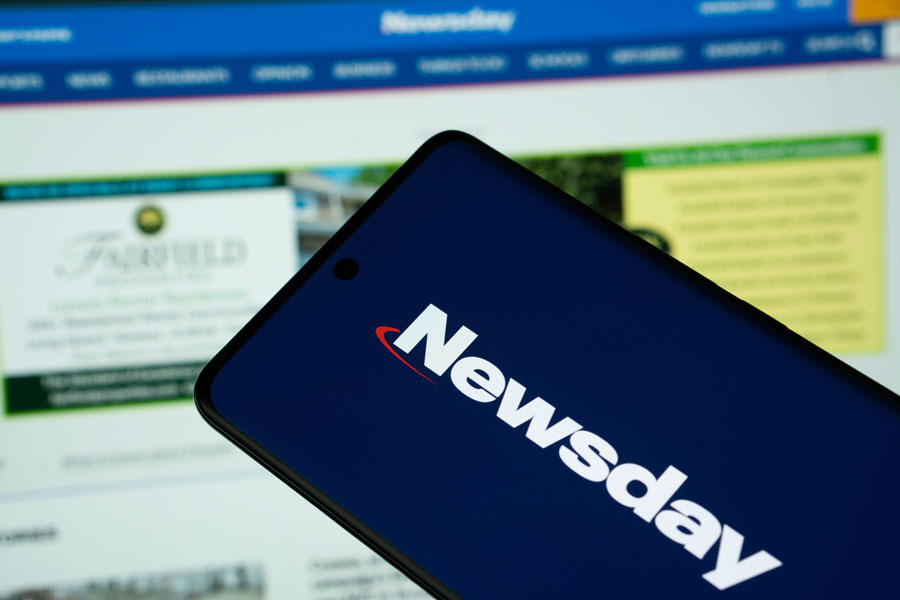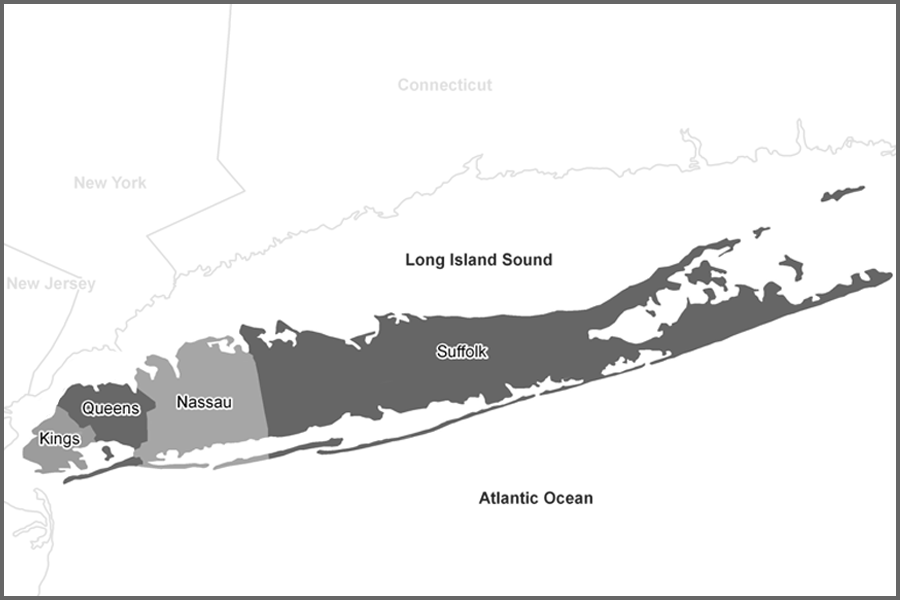
KINGS PARK, NY – When people think of Long Island, they almost always picture two counties: Nassau and Suffolk. Yet geographically, Long Island stretches across four counties, including Brooklyn (Kings County) and Queens. That disconnect, between the map and the cultural mindset, is no accident. It’s the product of decades of local media choices that reshaped how generations of residents saw their home.
The Power of a Newspaper: Newsday’s Early Boundary
In 1939, Alicia Patterson launched Newsday, a bold new daily newspaper. At the time, Long Island was often viewed as an extension of New York City, with Brooklyn and Queens firmly integrated into the city’s political and cultural orbit. Patterson made a defining choice: Newsday would focus only on Nassau and Suffolk.
That editorial decision did more than narrow coverage. It redrew a mental map. By spotlighting the suburbs east of the city, Newsday gave Nassau and Suffolk their own voice, their own stories, and their own sense of importance apart from the five boroughs. Over time, residents came to internalize that distinction: when you said “Long Island,” you weren’t talking about Brooklyn brownstones or Queens neighborhoods – you meant suburban towns, schools, beaches, and a different way of life.
Television Reinforcement: News 12 Long Island
Four decades later, the launch of News 12 Long Island in the 1980s cemented this identity. As the region’s first 24-hour cable news channel devoted exclusively to Nassau and Suffolk, it became a daily presence in living rooms across the Island.
Every newscast reinforced the idea that this was Long Island: traffic on the LIE, weather on the South Shore, local school board meetings, county politics, and neighborhood stories. Brooklyn and Queens were absent, not because they didn’t exist, but because they belonged to New York City media. For tens of thousands of households, News 12 became the soundtrack of everyday life – and with it, the cultural boundary between “the Island” and “the city” grew even sharper.
A Media-Made Border
Together, Newsday and News 12 accomplished something remarkable: they created a new regional identity that overrode the map. The geographic truth is that Brooklyn and Queens are part of Long Island. But the cultural truth is different. In the minds of residents, Long Island begins at the Queens/Nassau line – a border drawn not by nature or government, but by headlines and broadcasts.
Why It Matters
This story is more than a historical curiosity. It demonstrates the immense power of media to shape how communities see themselves. Boundaries are not just political or geographic – they are cultural, and once reinforced over decades, they become almost impossible to undo.
For Long Island, the “two-county” identity has had lasting effects:
- Regional Unity: Nassau and Suffolk residents often see themselves as part of a shared suburban community.
- Economic Storytelling: Industries, nonprofits, and local leaders frame their work as part of “Long Island” development, not “outer borough” development.
- Cultural Divide: Brooklyn and Queens may share the same landmass, but their identity is firmly tied to New York City, leaving Nassau and Suffolk to define Long Island in the public imagination.
Key Takeaway
News doesn’t just report on a place – it helps create it. On Long Island, Newsday and News 12 didn’t merely cover Nassau and Suffolk; they transformed them into “the Island.” What started as editorial focus became cultural fact. Today, the line at the Queens border is more than a county boundary. It’s a media-made identity that continues to shape how Long Islanders see themselves, and how the world sees Long Island.
Author’s Note
This article was inspired by The Map the Media Drew, an email only newsletter written by Jaci Clement, CEO & Executive Director of the Fair Media Council. In it, she made the powerful point that Long Island proves news doesn’t just cover a place, it creates one. It’s a fascinating example in proof. I should also mention that Jaci is someone who knows the media itself probably better than anyone I personally know. I often mention to her that the newsletter should be published more widely – not because it deserves a bigger audience, but because readers deserve the kind of insight it delivers. It’s simply too good to keep tucked away in an email.



